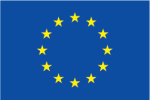In 1910 the American physicist Robert Millikan determined the electronic charge carried by an electron through a series of experiments with falling oil-drops. The experimental setup was ingenious, but also prone to mistakes, and resent analysis of Millikan’s laboratory protocols have revealed that he filtered his raw data quite heavily and only included a subset of the experimental runs in his publications. The question is: Did Millikan do anything wrong?
When I started teaching research ethics to undergraduate students I included the Millikan story as part of a theme on research integrity. To my mind the case was clear: Millikan had deleted data points – sometimes based on prior analysis that a specific data point did not fit his hypothesis – and he had done so without transparency. This was a clear case of misconduct (at least from a moder point of view; how Millikan’s contemporaries would have judged the case is perhaps less clear). My students however did not see things the same way. Millikan received a Nobel prize for his effort, so his intuition was right all along, but more importantly the students pointed out that in real life, experimental work is often messy and difficult; sometimes you make mistakes, sometimes the equipment malfunctions and sometimes anomalies just prop up for no apparent reason. And of course, if you want to make a meaningful analysis you will have to remove the bad data. So, what I saw as illegitimate filtration of data, the students saw as necessary cleaning.


Leave a Reply